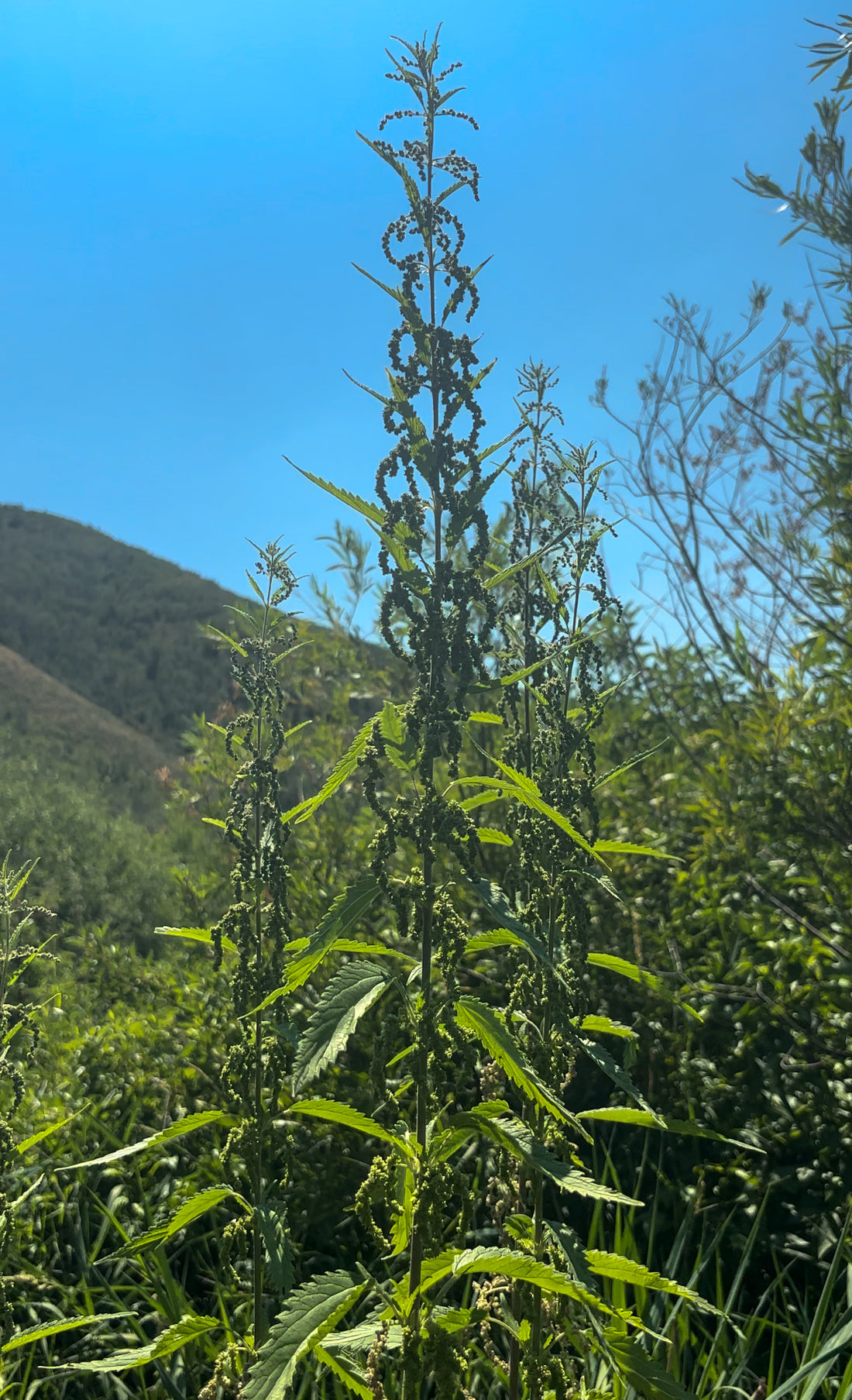
Herbal Monograph: Stinging Nettle (Urtica dioica)
Herbal Monograph: Stinging Nettle (Urtica dioica)
Botanical Profile
- Common Names: Stinging nettle, common nettle
- Scientific Name: Urtica dioica
- Family: Urticaceae
- Parts Used: Leaves, stems, roots
Medicinal Properties
Stinging nettle is renowned for its numerous medicinal properties. It is highly nutritious and contains a wealth of vitamins (A, C, K, and several B vitamins), minerals (iron, calcium, magnesium, potassium), amino acids, polyphenols, and pigments such as beta-carotene. The plant’s therapeutic uses span a variety of health benefits:
- Anti-inflammatory: Nettle has potent anti-inflammatory properties, making it useful for conditions such as arthritis and joint pain.
- Diuretic: It helps in promoting urination, thus aiding in detoxification and alleviating fluid retention.
- Antihistamine: Effective in treating allergies and hay fever by reducing histamine production.
- Iron-Rich: It helps in combating anemia and fatigue due to its high iron content.
- Antioxidant: Protects cells from damage by free radicals, contributing to overall health and wellness.
- Hair and Skin Health: Used to improve hair growth and skin conditions like eczema and acne.
How to Use Stinging Nettle
Stinging nettle can be used in various forms, including teas, tinctures, capsules, and topical applications.
- Tea: Steep dried nettle leaves in hot water for 10-15 minutes. Drink daily to enjoy its general health benefits.
- Tincture: Take a few drops of nettle tincture in water or juice, particularly for treating allergies or inflammation.
- Capsules: Convenient for those who prefer a standardized dose.
- Topical: Apply creams or oils infused with nettle to relieve joint pain or skin conditions.
- Food: Fresh nettle leaves can be cooked like spinach and added to soups, stews, and other dishes.
Herbal Energetics
- Taste: Slightly bitter, salty
- Temperature: Cooling and drying
- Energy: Nettle is known to strengthen and build vitality, making it excellent for individuals who are fatigued or recovering from illness. It supports the kidneys and adrenals and is grounding and nourishing.
Habitat and Growth
Stinging nettle is native to Europe, Asia, and North America and thrives in rich, moist soil, often found in forests, grasslands, and disturbed areas such as roadsides and gardens. It prefers partial shade but can grow in full sun as well.
Harvesting Stinging Nettle
Harvest nettle in the spring and early summer before the plant flowers. Use gloves to avoid getting stung by the tiny hairs on the leaves and stems. Cut the top 6 inches of the plant, which are the most tender and nutrient-rich. Nettle can be dried for later use or used fresh in culinary and medicinal preparations.
Recipes and Formulas
Nettle Infusion
Ingredients:
- 1 ounce of dried nettle leaves
- 1 quart of boiling water
Instructions:
- Place the dried nettle leaves in a quart-sized jar.
- Pour the boiling water over the leaves.
- Cover and let steep for 4-8 hours or overnight.
- Strain the leaves and store the infusion in the refrigerator.
- Drink 1-2 cups daily.
Nettle Pesto
Ingredients:
- 2 cups fresh nettle leaves (blanched to remove stinging hairs)
- 1/2 cup olive oil
- 1/4 cup nuts (pine nuts, walnuts, or almonds)
- 1/4 cup grated Parmesan cheese
- 2 cloves garlic
- Salt and pepper to taste
Instructions:
- Blanch the nettle leaves in boiling water for 1-2 minutes. Drain and cool.
- Combine all ingredients in a food processor.
- Blend until smooth.
- Serve over pasta, spread on bread, or as a dip.
Nettle Hair Rinse
Ingredients:
- 1 cup fresh or 1/2 cup dried nettle leaves
- 2 cups boiling water
- 1 tablespoon apple cider vinegar
Instructions:
- Steep the nettle leaves in boiling water for 20-30 minutes.
- Strain the liquid and add the apple cider vinegar.
- After shampooing, pour the nettle rinse over your hair and massage into the scalp.
- Rinse with cool water.
Stinging nettle is a versatile and potent herb that offers a wide range of health benefits. Whether used internally or externally, it is a valuable addition to any herbal apothecary.

